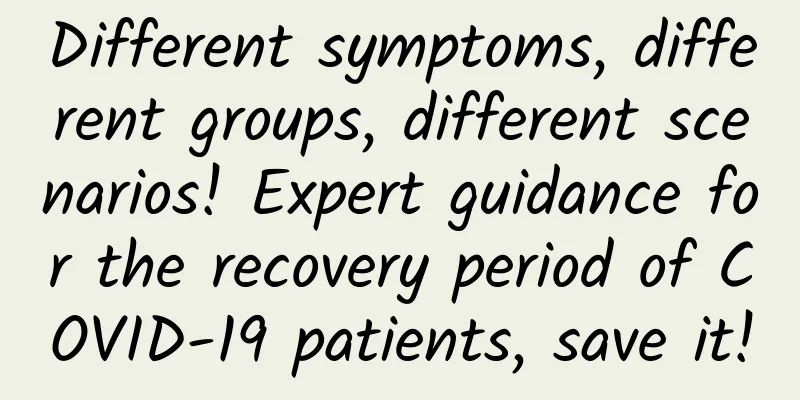The effect of anesthesia on pain perception: Why is there no pain after surgery?

|
Postoperative pain management plays a vital role in the medical field. Anesthesia, as a key treatment, successfully alleviates the pain that patients may face after surgery. This article aims to explore the mechanism of how anesthesia affects pain perception to explain why patients after surgery usually do not experience severe pain. By understanding how anesthetic drugs interfere with nerve transmission, inhibit nerve excitability, and how different types of anesthesia methods are applied, we can better understand the role of anesthesia and provide patients with a more comfortable and painless surgical experience. This not only helps with postoperative recovery, but also improves the success rate of surgical treatment. 1. Effects of anesthesia on pain perception 1.1 Mechanism of action of anesthetic drugs The mechanisms of action of anesthetic drugs are critical because they directly affect the process of pain perception. These drugs achieve pain control in a variety of ways. First, they can interfere with the neurotransmission process, weakening or interrupting pain signals by affecting the signaling between neurons. This includes changing the electrical potential of the nerve cell membrane, preventing the release of excitatory neurotransmitters, or inhibiting the excitability of neurons by affecting the excitatory channels of neurons. These mechanisms of action help block the transmission of pain signals, thereby reducing the patient's pain perception. 1.2 Different types of anesthesia Anesthesia can be divided into different types based on the area and method of its action. General anesthesia is a widely used anesthesia method that completely eliminates the feeling of pain by putting the patient into a coma, blocking the brain's perception of pain signals. Local anesthesia locally paralyzes the nerve endings in the surgical area, making them insensitive, but the patient remains awake. Nerve blocks are injections of anesthetic drugs that block specific nerve transmissions, thereby relieving local pain. Choosing the appropriate type of anesthesia depends on the nature of the surgery, the patient's health, and the judgment of the medical professional. 1.3 Side effects of anesthesia While anesthetic drugs play a key role in pain management, they can also come with some side effects. These side effects include nausea, vomiting, cloudiness, and respiratory depression. Nausea and vomiting may be related to the effects of anesthetic drugs on the central nervous system, while cloudiness and respiratory depression may be related to the effects of the drugs on the respiratory center. Healthcare professionals need to carefully weigh the effectiveness of pain management against these side effects to ensure that patients receive the best care and comfort after surgery. In some cases, additional medications or supportive measures may be used to mitigate or manage these side effects. 2. Postoperative pain management 2.1 Individual Differences Everyone's pain perception and tolerance are unique, and this individual difference directly affects the effectiveness of anesthesia. Therefore, before surgery, the medical team needs to carefully evaluate the patient's medical history, age, health status, and type of surgery to determine the most suitable anesthesia method. Some patients may be more sensitive to anesthetic drugs, while others may require higher doses to achieve pain control. Therefore, a personalized anesthesia plan can ensure that patients receive the best pain management after surgery and minimize discomfort and pain. 2.2 Multimodal pain management To more fully manage pain after surgery, healthcare teams often use a multimodal pain management strategy. This includes not just relying on anesthetic medications, but also using pain medications, physical therapy, and psychological support. By combining these approaches, pain can be better managed and the amount of anesthetic medications used can be reduced, which can reduce the risk of side effects that patients may face. Pain medications can supplement the effects of anesthetic medications, physical therapy can aid in rehabilitation and reduce muscle tension in the surgical area, and psychological support can reduce anxiety and discomfort from pain after surgery. 2.3 Postoperative Care and Monitoring Postoperative care and monitoring are essential to ensure that the patient's pain is managed appropriately. The medical team will closely monitor the patient's pain level and the dose of anesthetic medication to ensure that the pain is effectively controlled. This means that medical professionals will adjust the amount of anesthetic medication when necessary to meet the patient's needs and ensure that they are as comfortable as possible during the recovery process. Postoperative care also includes providing the necessary rehabilitation advice and support to promote the patient's recovery and recovery. Conclusion: Anesthetic drugs play a vital role in postoperative pain management and can effectively reduce the patient's pain. However, to achieve this goal, the medical team must fully consider the individual differences of the patient and the type of surgery. This means that the appropriate anesthesia method and dosage need to be selected according to each patient's unique situation to ensure that the pain is effectively controlled while minimizing potential side effects. By adopting a comprehensive pain management strategy, including multimodal treatment methods and close postoperative monitoring, more comprehensive care can be provided to ensure that patients do not feel severe pain after surgery, while minimizing the discomfort and risk of unnecessary discomfort and side effects. This helps to increase the success rate of surgical treatment and improve the patient's postoperative experience. Author: Liu Dandan, Beijing University of Chinese Medicine Dongzhimen Hospital Luoyang Hospital |
Recommend
What to do if you have stomach pain during your fourth month of pregnancy
In life, the stomach helps us a lot. The food we ...
Why doesn't sugarcane grow tall?
Sugarcane is a temperate and tropical crop. It is...
How long does it take for the blastocyst to implant?
Nowadays, in vitro fertilization technology has b...
What to eat during menstruation to remove blood stasis
During the menstrual period, if there is blood ac...
Can pregnant women eat donkey-hide gelatin?
Speaking of donkey-hide gelatin cake, I believe e...
What are the symptoms of third degree cervical erosion?
Uterine erosion has become a common gynecological...
Pregnant women eat durian and chicken soup to help them grow a baby
Pregnant women all like to eat some durian, becau...
What to do if a woman has anal prolapse
We know that the occurrence of symptom such as re...
Why is Teddy born so sexy? Why does Teddy lift its legs when you touch it while sleeping?
Teddy is a pet dog, a small dog, and many people ...
How to make fried dough sticks and what should be paid attention to when making fried dough sticks
During the epidemic, my friends stayed at home, a...
What should I do if my breasts become smaller after abortion?
Many female friends find that their bodies have c...
Can I eat watermelon during my period?
Female friends will have their menstrual period o...
How much does hysterectomy cost
Hysterectomy is a surgical procedure that involve...
Janrain: Social login has many benefits
According to a Janrain study published in January...
Is it better to wash underwear by machine or by hand? How to wash underwear without deformation?
Underwear is a must-have item for all seasons, bu...









